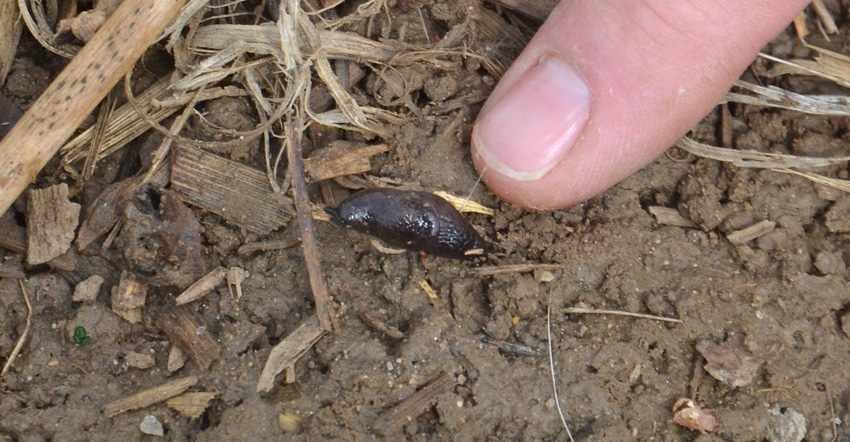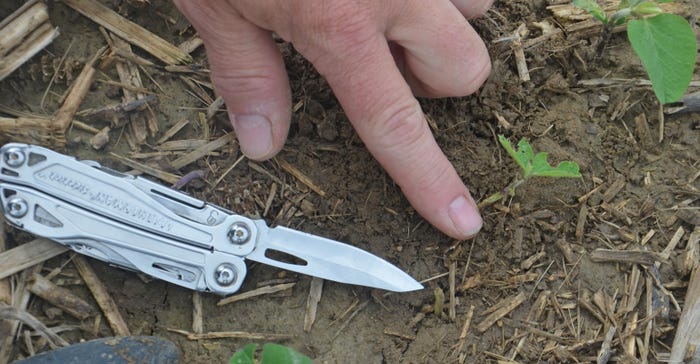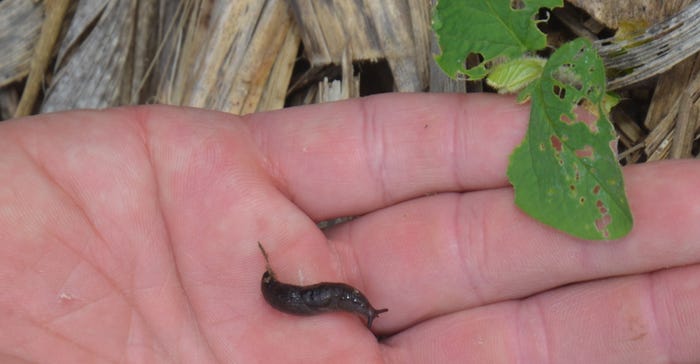
Your soybeans pop through the surface and you’re excited. Then the next time you visit, there don’t seem to be as many plants. You look closer and note missing plants, plus damaged leaves on small seedlings. What’s going on?
It takes actual field inspection to make an accurate diagnosis. Still, from the description, Steve Gauck can make an educated guess. “You’re likely talking about slug damage,” he says. “I would ask about weather conditions to get a better picture. If it is indeed slugs at work, it’s likely been cool and wet.”
Gauck is a regional agronomy manager for Beck’s. He also farms with his family near Greensburg, Ind. He will be the resident agronomist making observations on the Soybean Watch ’22 field once it gets rolling this year. Beck’s will once again sponsor Soybean Watch. The goal is to pick up on trends that could show up in your fields based on what’s happening in the Soybean Watch field in central Indiana.
Unwelcome pest
Slugs don’t belong to the insect family, meaning you can’t control them with insecticides. In fact, there are no approved economical controls for keeping them at bay on a field-wide basis, Gauck says. Yet the damage they cause can look very much like insect damage.
“You may see tattered leaves from slug feeding,” Gauck notes.

The first generation of bean leaf beetles can also cause leaf damage. “Early beetle feeding usually results in small, round holes in leaves,” Gauck observes. “Bean leaf beetle feeding early in the season is usually of little consequence.”
The biggest threat from slugs is that they can clip off stems and remove all vegetation while feeding on very small seedlings. In effect, they can kill the plant. What results is a reduced stand.

The scouting calendar in the Purdue University Corn and Soybean Field Guide recommends scouting for slugs from mid-April through very early June. You’re more likely to find them at work if it’s cold and wet for extended periods. Slugs like hiding in residue, then crawling out to feed on emerging plants.
“They don’t always read the calendar,” Gauck quips. “We’ve found them in our Soybean Watch alive and well as late as very late June one year and early July in another year. The only saving grace is that by that time, soybean plants are large enough that slugs don’t cause much damage.”
The worst part about slugs is that the only effective cure is warmer, drier weather.
“There are years when stand loss is severe enough that your best option is replanting,” he says. “And even then, there is no guarantee they won’t cause problems again.”
About the Author(s)
You May Also Like




